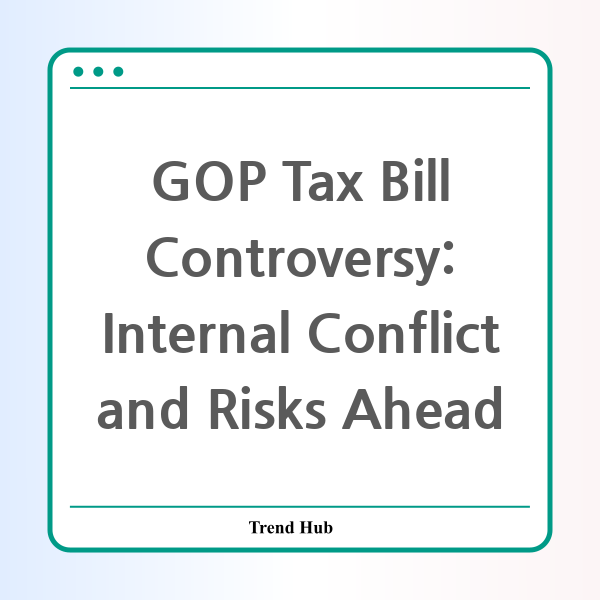* This website participates in the Amazon Affiliate Program and earns from qualifying purchases.

As we delve into the current political landscape, a pressing question arises: Can the GOP maintain its unity while navigating the complexities of the proposed tax bill? Recent turmoil within the ranks has ignited concerns over the viability of this crucial legislation.
Conservative Republicans are voicing significant dissent over the proposed domestic policy bill, creating ripples of uncertainty about its future. This internal conflict raises not only questions about party cohesion but also the implications for the tax bill, which is anticipated to introduce a series of tax cuts alongside increased spending. The juxtaposition of reduced taxes and heightened expenditure poses a potential risk for the long-term economic stability of the nation.
The new fiscal blueprint emerging from the House of Representatives has been labeled a "fiscal time bomb." Critics argue that the budget lacks essential fiscal responsibility, as it is projected to deepen existing government deficits. With national debt reaching levels not seen since 1946, and estimates indicating a troubling rise by 2034, apprehensions about financial sustainability are growing among lawmakers and taxpayers alike.
At the heart of the controversy are the tax cuts that proponents claim will stimulate economic growth. However, the absence of a robust plan to offset increased spending has led to questions about the bill's long-term repercussions. How will these changes affect the average American taxpayer? And will the potential for increased government deficits outweigh the promised benefits of the tax cuts?
It's important to dissect the components of this proposed tax bill critically. For instance, if we consider the potential impacts on various income brackets, we see a complex picture emerge:
| Income Bracket | Proposed Tax Cut (%) | Estimated Impact on Taxpayers |
|---|---|---|
| Low Income | 5% | Increased disposable income but limited overall impact |
| Middle Income | 10% | Moderate increase in spending power |
| High Income | 15% | Significant gains but concerns over equity |
These figures illustrate how the proposed tax cuts could benefit different segments of the population. Yet, the overarching fear remains: what will be the total cost? With deficits projected to worsen, American families may eventually bear the brunt of this fiscal recklessness.
As the debate unfolds, the question of fiscal responsibility looms large. Will the GOP manage to rally around a cohesive strategy that balances tax incentives with prudent fiscal management? Or will the fractures within the party sabotage not only the tax bill but also their political future? Only time will tell, but as the stakes rise, so does the urgency for a clear and responsible approach to taxation and spending.
In conclusion, while tax cuts may offer immediate relief, the long-term implications of increased government spending and mounting debt could pose significant challenges for the American economy. As constituents, it is crucial to stay informed and engage with elected officials about fiscal policies that affect our financial futures. The GOP tax bill is not just a legislative issue; it is a reflection of the party's priorities and a potential turning point in American fiscal policy.
* This website participates in the Amazon Affiliate Program and earns from qualifying purchases.